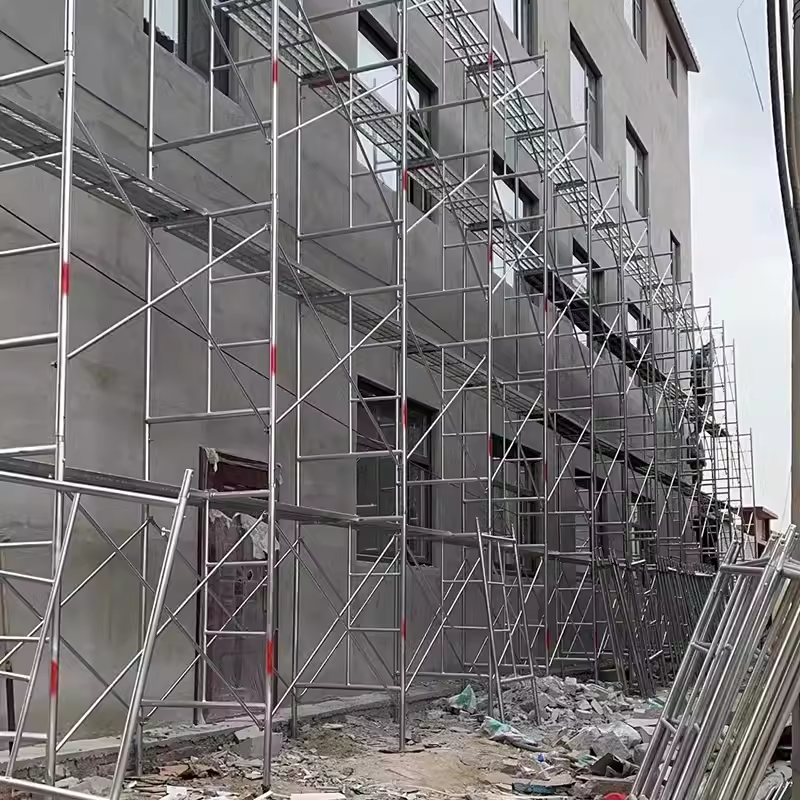Dec . 05, 2024 04:09 Back to list
designing formwork solutions for concrete manufacturing facilities and production efficiency
Building Shuttering for Concrete Factories An Essential Guide
In the construction and manufacturing industries, particularly within concrete factories, the use of shuttering or formwork is a crucial component. Shuttering provides the necessary support and mold for casting concrete, thereby playing a pivotal role in ensuring the structural integrity of concrete elements. This article aims to explore the importance of shuttering in concrete factories, the various types of shuttering available, and best practices for its use.
Importance of Shuttering
Shuttering serves multiple purposes in the concrete casting process. It creates the mold that defines the shape and dimensions of the concrete structure, ensuring that the end product meets design specifications. Moreover, effective shuttering helps to maintain the weight and stability of wet concrete before it hardens, minimizing risks such as deformation or spills.
The quality of shuttering directly impacts the overall quality of the concrete surface. Adequate shuttering results in smooth finishes, which are crucial for aesthetic appeal and functional performance. Conversely, poorly designed or executed shuttering can lead to defects like honeycombing, blowholes, and uneven surfaces. Therefore, investing in the right shuttering methods is vital for any concrete factory aiming for high-quality outputs.
Types of Shuttering
Shuttering can be classified into several types based on materials and applications
1. Timber Shuttering Traditionally, timber has been a favored material for shuttering in concrete construction. It's cost-effective and relatively easy to work with. However, timber is susceptible to deformation due to moisture and weather conditions, making it less reliable for long-term projects.
2. Steel Shuttering Steel shuttering is known for its durability and strength, which allows for reuse across multiple projects. It provides excellent surface finish and accuracy in dimensions. Despite its higher initial cost, the long lifespan and low maintenance requirements make it a cost-effective solution over time.
3. Aluminum Shuttering This is becoming increasingly popular due to its lightweight nature and ease of handling. Aluminum shutters offer high precision and can be reused multiple times, similar to steel. They provide an excellent surface finish, which reduces the need for extensive surface treatments post-casting.
building shuttering for concrete factories

4. Plastic Shuttering Made from high-strength plastic, plastic shuttering is lightweight and resistant to corrosion. It can be easily maneuvered, making it ideal for complex shapes and designs. However, it may not be as widely used for heavy-duty applications compared to its metal counterparts.
5. Reusable and Modular Systems Emerging in recent years, modular shuttering systems offer significant flexibility and efficiency. These systems can be easily assembled and disassembled, allowing concrete factories to adapt to various project requirements effectively.
Best Practices for Shuttering
1. Design Considerations The design of shuttering should consider load-bearing capabilities, concrete pressure, and environmental factors. Proper planning can prevent structural failures during the pouring process.
2. Material Selection Choosing the right material for shuttering is essential. Consider factors such as cost, durability, and environmental impact to select the most suitable option for your specific application.
3. Assembly and Installation Careful assembly and installation of shuttering are vital to ensure safety and structural integrity. Trained personnel should oversee this process, making sure that all components are firmly fixed and aligned.
4. Regular Maintenance Maintaining shuttering equipment is crucial for prolonging its lifespan. Regular cleaning, inspection, and repairs should be undertaken to prevent issues during concrete casting.
5. Safety Measures Lastly, adhering to safety regulations is paramount when working with shuttering. Proper training for workers and safety equipment are necessary to prevent accidents on site.
Conclusion
The role of shuttering in concrete factories cannot be overstated. It contributes significantly to the efficiency, safety, and quality of concrete production. By understanding the types of shuttering available and adhering to best practices, concrete factories can enhance their operations and deliver superior products, ultimately meeting the demands of modern construction. Embracing innovation in shuttering technologies will also pave the way for sustainable practices in the concrete industry, ensuring its growth in the years to come.
-
High Quality Climbing Formwork for High-Rise Building & Core Wall Solutions
NewsJul.25,2025
-
High-Quality Slab Formwork Solutions for Efficient Construction
NewsJul.24,2025
-
High-Quality Wall Formwork Systems for Versatile Concrete Construction
NewsJul.23,2025
-
Climbing Formwork Solutions for High-Rise Construction Efficiency
NewsJul.22,2025
-
Premium Table Formwork for Slab Construction | Reusable & OEM Support
NewsJul.22,2025
-
Heavy Duty Props EN1065 Certified - Adjustable Steel Shoring for Formwork
NewsJul.21,2025